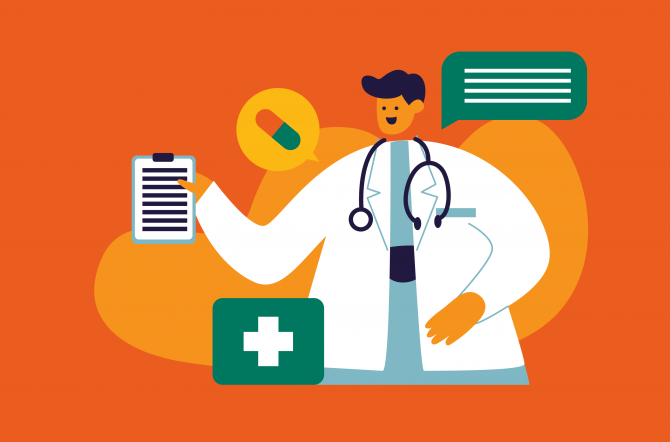As patient activation remains a priority for healthcare communication managers, you must be well-versed in patient education strategies. However, education means different things to different patients. Therefore, before issuing patient education materials, you should go through several steps to ensure that the strategies are appropriate for patients.
What are patient education strategies?
Patient education impacts patient behavior and brings about the needed changes in knowledge, attitudes, and skills to maintain or improve health. Patient education strategies should include more than just providing patients with information. It should go beyond that to generate meaningful conversations.
Therefore, patient education strategies should motivate patients to make positive lifestyle changes.
Tips to improve patient education strategies
To prevent the situation when a patient is discharged but rehospitalized soon after, you should constantly improve patient education in hospitals. Some of the things you can do to help patients learn more include:
- Determine what the patient already knows. Correct any wrong info.
- Provide patients with information in simple terms. Use visual aids as much as possible.
- Inquire about their comprehension of the care, and make plans for the next lesson.
- Ask the patient to describe (step by step) how they would explain their disease or treatment to a family member or their loved one.
- As you dispense the medications, make sure the patient understands them. Verify that your patients understand when and how to refill prescriptions.
- Inform patients about the signs and symptoms of their condition that require immediate action.
4 Patient Education Strategies To Increase Patient Engagement
#1 Examine the patient’s health literacy
Healthcare providers should examine patients’ health knowledge before implementing patient education techniques. The reason is simple. Learning resources will be ineffective if the patient lacks health literacy- the ability to obtain basic health information required to make health care decisions.
Healthcare professionals should assess patient health literacy during medical consultations, or patients should finalize the assessments before appointments. You can find some resources to measure patient health literacy on the Agency for Healthcare Research and Quality (AHRQ) website.
Clinicians must focus on specific problem areas when patients have low health literacy. According to one study published at the end of 2016, patients with lower health literacy are less likely to incorporate health tools into their healthcare plans.
Educational resources should begin by identifying key terms and ideas. Later materials can also review health information.
#2 Engage with Your Patients at Their Level
Remember to talk WITH your patients rather than talk AT them. Two of the most important ways to enable meaningful dialogue are
- To simplify terms rather than mess them up with clinician-level vocabulary
- And explain the benefits of proper condition management. Just show your patients the easiest way to manage their health condition properly.
Using discriminatory tones may prevent your patients from learning and endanger their level of comfort and trust.
Recommend reading:
#3 Provide educational materials in learning styles that patients prefer
Because not all tools are suitable for all patients, providers need to engage patients in educational discussions and assess patient preferences. Some patients may require hard-copy materials. If the patient is deaf, use visual materials rather than verbal instructions.
You should consider how patients learn best and what learning style is workable to incorporate into patients’ daily lives. To get the result faster, work with patients to determine which style meets their preferences so they are most effective.
To prevent repeated information and information overload, you should also consider
- What the patient needs to know (rather than what the patient would like to know)
- What is crucial for the patient
- What the patient already knows
You can use various learning styles to improve patient education, from digital media to document handouts. Patient education materials can include the following but are not limited to:
- Individualized instruction
- Demonstrations
- Comparison
- Graphics
- Printed materials, such as brochures
- Podcasts
- YouTube videos
- DVDs or videos
- Presentations
- Posters or graphs
For example, the below video from the University of Minnesota explains rheumatic heart disease in detail: its causes and symptoms. The video uses animation to illustrate the condition better:
Recommend reading:
#4 Using Technology to Deliver Materials
Patients benefit from health information technology because it makes it easier for them to find educational materials. Patients can easily access health information through online portals as they no longer need to visit hospital health information departments.
Online portals allow patients to access their medical histories and other health information via an online interface. Where appropriate, healthcare professionals can also use mHealth tools. These tools range from traditional learning tools to more interactive apps.
Health apps use strong engagement to inform patients about their health conditions and frequently walk them through self-management techniques.
Final words
Health literacy is about incorporating accessible, comprehensive content into all aspects of patient care, not just patient education. Therefore, patient education strategies should focus on all aspects, from the signs patients see as they enter the room to the language we use and the materials we distribute.
Read more:



![Top 5 Healthcare Video Production Companies to Work With [Update 2025] 2 top healthcare video production company](https://flearningstudio.com/wp-content/uploads/2021/06/414x364-3-420x370.jpg)
